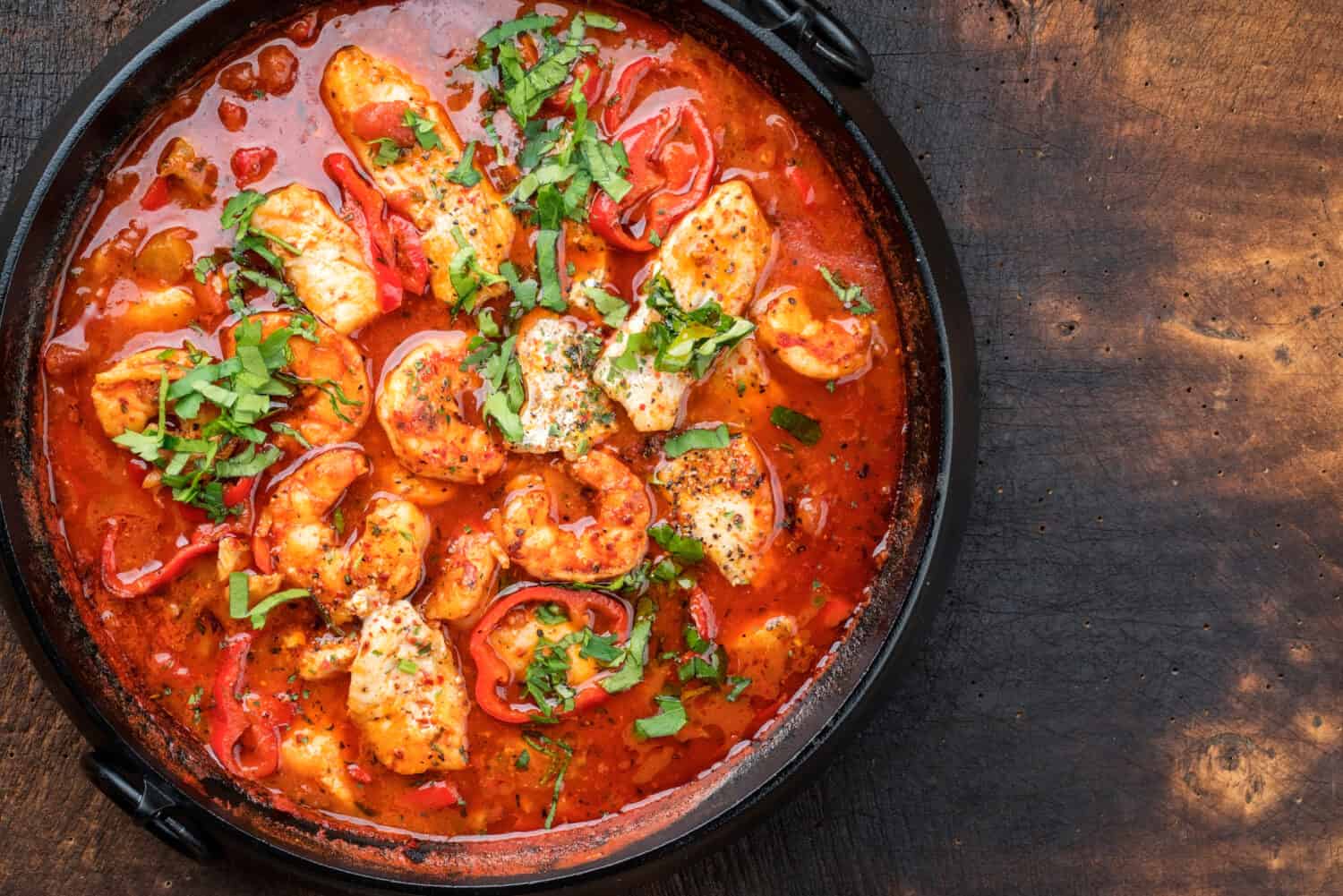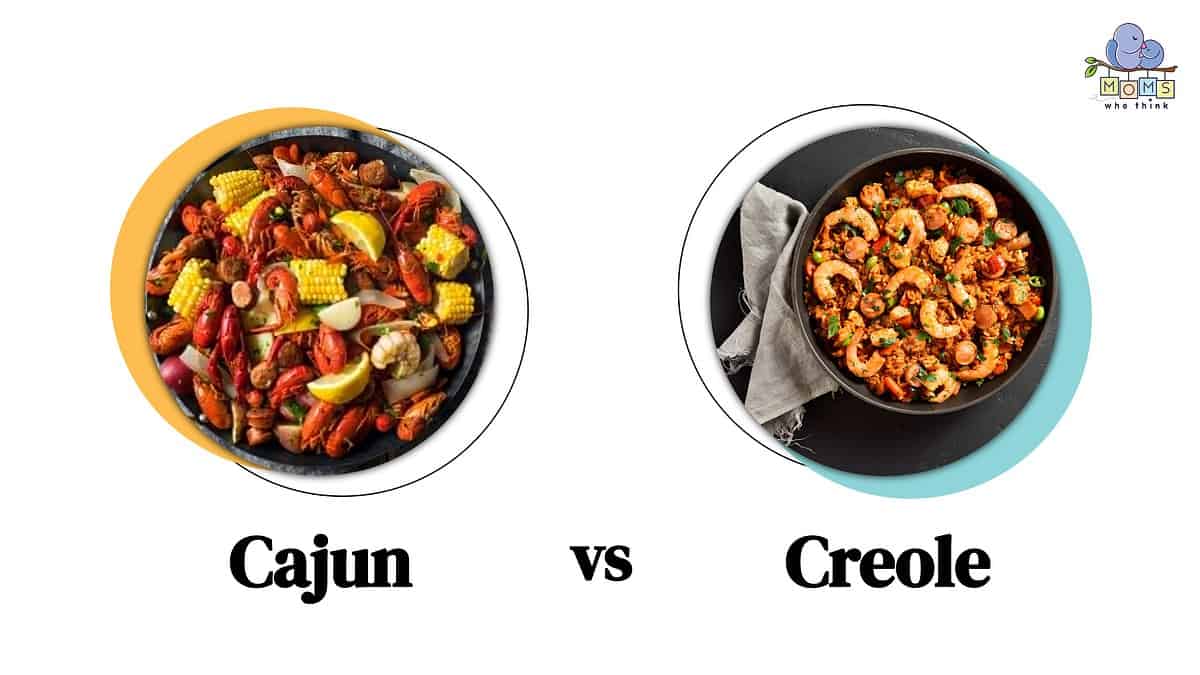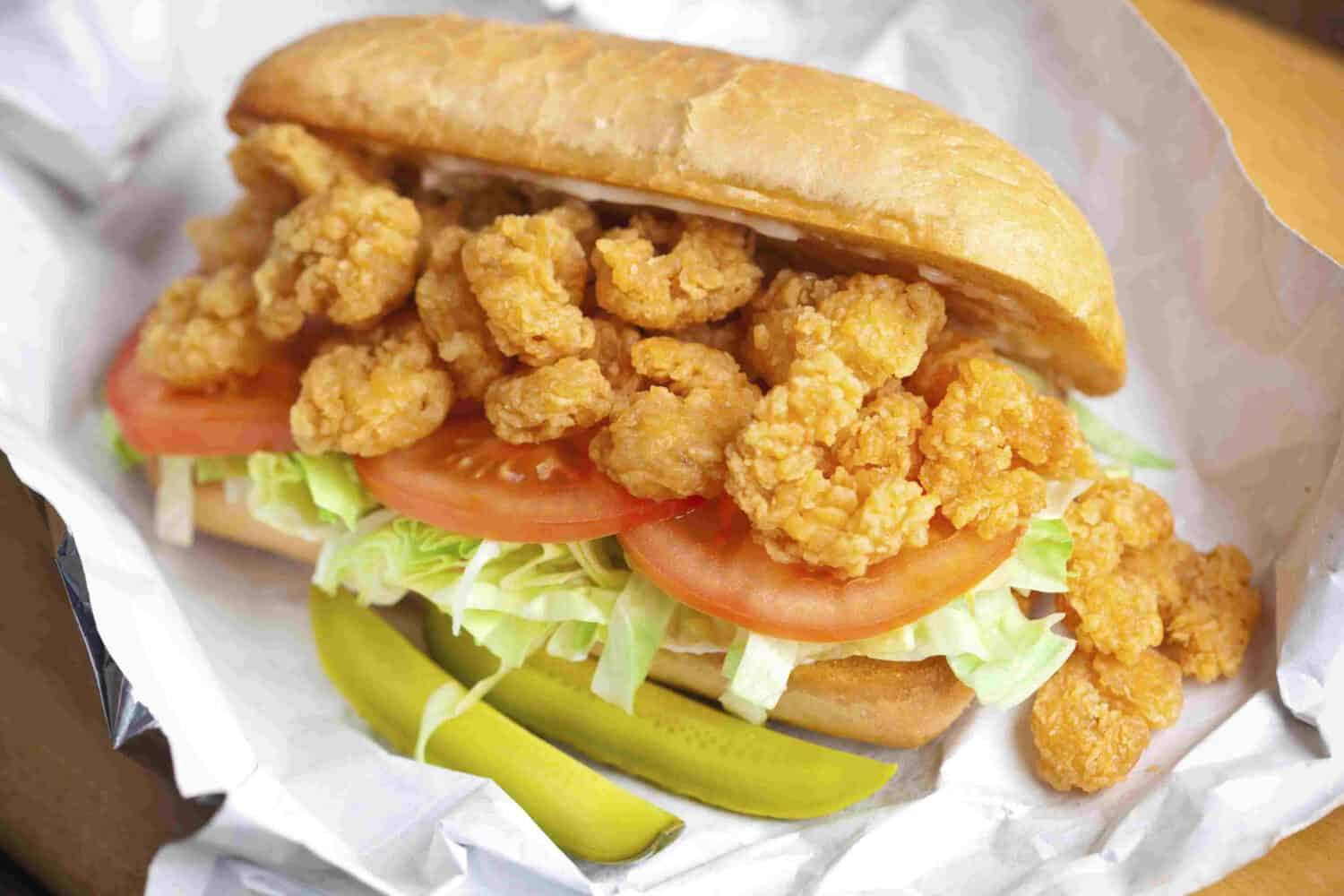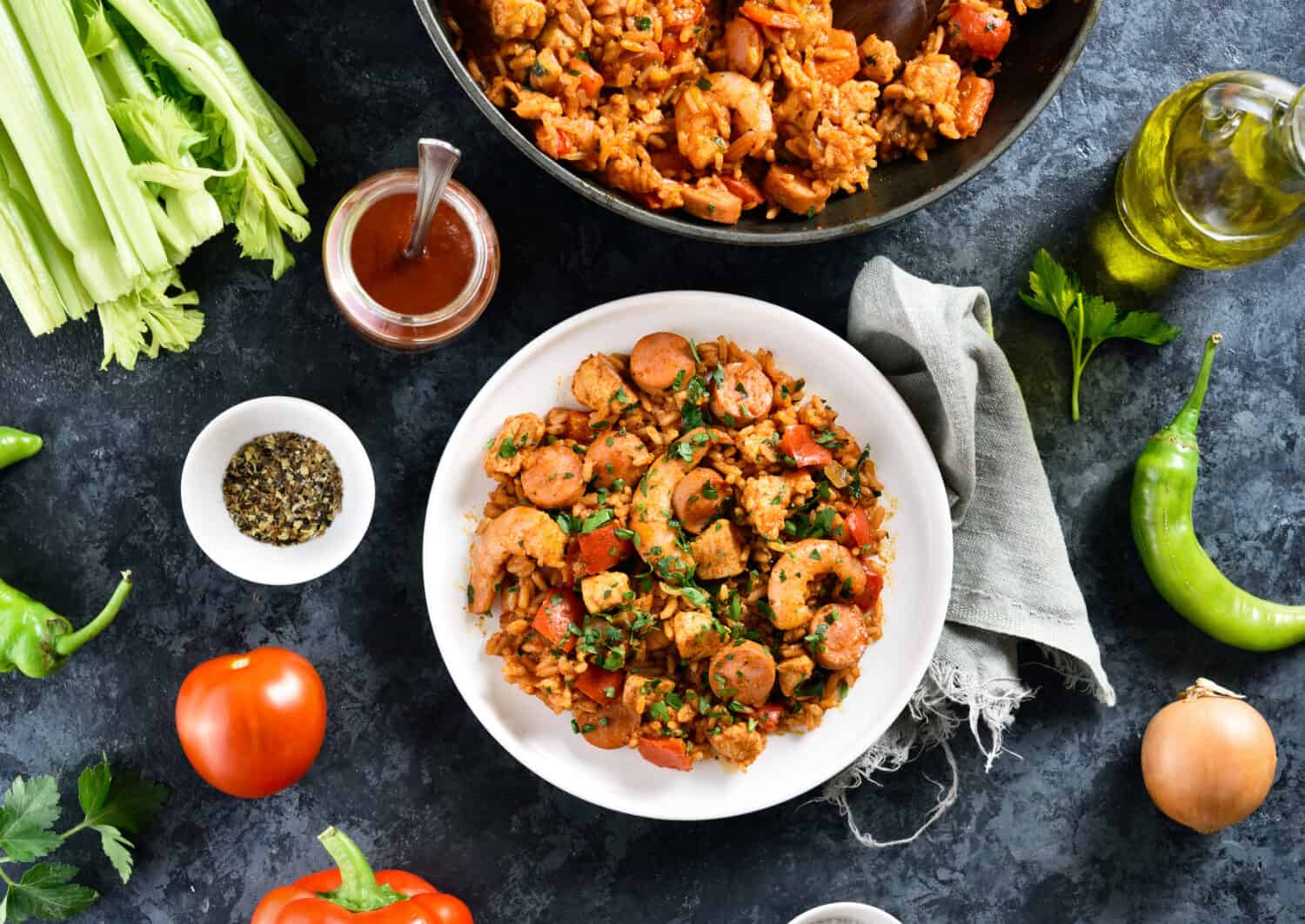

Cajun vs. Creole: 5 Key Differences & Recipes for Each
Deeply rooted in Louisiana's history, Cajun and Creole are unique Southern cooking styles. While they have influenced each other, they are not the same. However, people often confuse the two regional cuisines or use the terms "Cajun" and "Creole" interchangeably.
Cajun cuisine originated in the bayous of Louisiana, where people perfected cooking techniques using their limited resources. On the other hand, Creole cuisine reflects the mingling of cultures in the city of New Orleans. There, African, French, and Caribbean influences helped create Creole food. While both cooking styles share elements of French influence, they evolved independently. Once you understand the key differences between Cajun and Creole food, you will also gain a deeper understanding of the culture of Louisiana and New Orleans.
We will explore the history of the two regional cooking styles and define what separates them. Moreover, we will suggest some great recipes for each type of cooking. Let us look at Cajun vs. Creole food.

Cajun vs. Creole: What is Cajun food?
Cajun food came from the Acadian people, French settlers expelled from Canada (formerly Acadia) in the 18th century. They settled in the bayous and swamps of Louisiana and used what was available for food. Moreover, limited cooking tools meant these folks invented meals for one pot cooking. Some people call Cajun food "country food" because these factors influenced it.
Cajun food is famous for its spices and seasonings. These include cayenne pepper, paprika, black pepper, garlic, onion, thyme, and bay leaves. Bell peppers, celery, and onions make up the "holy trinity" of Cajun cuisine. This combination is akin to mirepoix, the flavor base for many French dishes.
Rice is also essential to Cajun dishes. Typically, cooks serve rice on the side or use it as a base for gumbo or jambalaya recipes. Gumbo is a famous Cajun stew made from chicken, shrimp, sausage, vegetables, and a roux-based sauce (a thickening sauce made of fat and flour). Usually, gumbo is served over rice. Jambalaya is a one-pot rice dish with meats (usually sausage, chicken, or seafood), vegetables, and seasonings.
Crawfish boils are also popular, both as social events and communal feasts. During the festivities, guests enjoy live crawfish boiled with potatoes, corn, and spices. Étouffée is another Cajun crawfish dish. It is a thick, flavorful stew made with crawfish (sometimes shrimp) and served over rice.
Cajun vs. Creole: What is Creole food?
While Cajun food is sometimes called "country food," Creole food is often called "city food." Creole food combines West African, Caribbean, French, and Spanish cooking. Additionally, Creole dishes are heavily seasoned and extremely spicy. Thyme, oregano, bay leaves, cayenne pepper, paprika, and garlic are the most common spices.
Creole cuisine is famous for its rich, complex sauces. One of the most well-known is the tomato-based Creole sauce. This sauce typically includes a combination of tomatoes, onions, bell peppers, celery, and various spices. Like Cajun cooks, Creole cooks consider bell peppers, celery, and onions the "holy trinity" of their dishes.
Roux, the French word for "brown sauce," is a base for many Creole dishes. Red beans and rice, jambalaya , and gumbo all incorporate roux. Rice is also very important in Creole cuisine. Like Cajun dishes, Creole dishes are heavily influenced by French cooking techniques. Additionally, seafood is an essential part of Creole food, including crawfish, oysters, shrimp, and other kinds of fish.
Red beans and rice is a classic Creole dish. Red kidney beans simmer with onions, bell peppers, celery, and spices, and are then served over rice. Another popular Creole food is a Po'boy Sandwich, typically made with fried seafood or roast beef, served on a French bread roll.

©motion photo/Shutterstock.com
Cajun vs. Creole: Key Differences
So, what separates these two styles of cooking? Cajun food tends to be spicier and heartier, while Creole food is known for its richer flavors and use of tomatoes. Cajun cuisine traditionally uses less tomatoes or, in some cases, avoids them altogether. This is due to the availability of tomatoes in the rural regions of Louisiana where Cajun culture developed. Creole cuisine, which originated in New Orleans and its surrounding areas, uses tomatoes and tomato-based sauces more often in dishes.
The five key differences between Cajun vs. Creole food
| Cajun | Creole | |
|---|---|---|
| Cultural Origins | Cajun cuisine originated with the Acadian people, French settlers expelled from Canada who settled in the rural areas of Louisiana. Their food has a more rustic, rural, and hearty character. | On the other hand, Creole cuisine has strong links to New Orleans and the diverse cultural influences there, including French, Spanish, African, Caribbean, and Native American. |
| Tomatoes | Cajun dishes often use a dark roux as a sauce base rather than tomatoes. Cooks also use tomatoes sparingly or not at all. | Creole cuisine commonly uses tomatoes and tomato-based sauces, which contributes to many Creole dishes' rich flavors. |
| Ingredients | Cajun food relies heavily on ingredients like smoked sausage, game meats (like alligator), and fish. It tends to be spicier, using spices like cayenne pepper and paprika. | Creole food has a broader range of ingredients, including seafood, such as shrimp, crawfish, and oysters. |
| Seasoning | Cajun dishes use a specific blend of seasonings that includes cayenne pepper, paprika, garlic, and onion. | Creole dishes have a wider array of herbs, spices, and seasonings, often including ingredients like thyme, oregano, and bay leaves. |
| Location | Cajun cuisine is considered "country food" because of its rural and rustic character. The dishes are in one pot and used with seasonings available to people outside larger urban areas like New Orleans. | People say Creole cooking is "city food" because it reflects the cosmopolitan influences of New Orleans, particularly the city's Caribbean and French influences. |
Now that we understand the differences between Cajun vs. Creole, we can explore the best recipes in each cuisine.
Cajun vs. Creole: Cajun Recipes
If you are looking for a taste of Louisiana country cooking, here are five great recipes to consider.
- Cush Cush or Couche Couche
- Cajun Chicken and Sausage Jambalaya
- Cajun Potato Salad
- Cajun Corn Maque Choux
- Cajun-Style Pot Roast
Cajun vs. Creole: Creole Recipes
If you are hankering for "city food," here are five recipes to consider. You will feel like you are in New Orleans while eating these Creole dishes at home.
- Andouille and Blackened Chicken Jambalaya Skillet
- Guy Fieri's Andouille-Stuffed Pork Loin with Creole Mustard
- Shrimp Étouffée
- Chicken, Sausage, and Shrimp Gumbo
- Daube Creole

©Tatiana Volgutova/Shutterstock.com
In Summary
Cajun and Creole are two culinary traditions deeply rooted in the vibrant culture of Louisiana. While they share some similarities, such as a love for bold flavors and a rich use of spices, their tastes, origins, and techniques differ.
Cajun cuisine, born in the bayous of Louisiana, is a simple, rustic food. These dishes rely heavily on locally available ingredients like game meat, seafood, and vegetables. Cajun cooks also use roux, a mixture of flour and fat that gives many Cajun dishes a deep, earthy flavor.
On the other hand, Creole food developed mainly in New Orleans. This cooking style blends French, Spanish, African, and Caribbean influences. Creole dishes have more ingredients than Cajun dishes. It also uses tomatoes liberally, whereas Cajun cooks use little or none at all. However, both styles of cooking embrace the "holy trinity" of bell peppers, celery, and onions. Whichever you prefer, Cajun and Creole food are delicious cuisines that reflect Louisiana's long, complex cultural heritage.